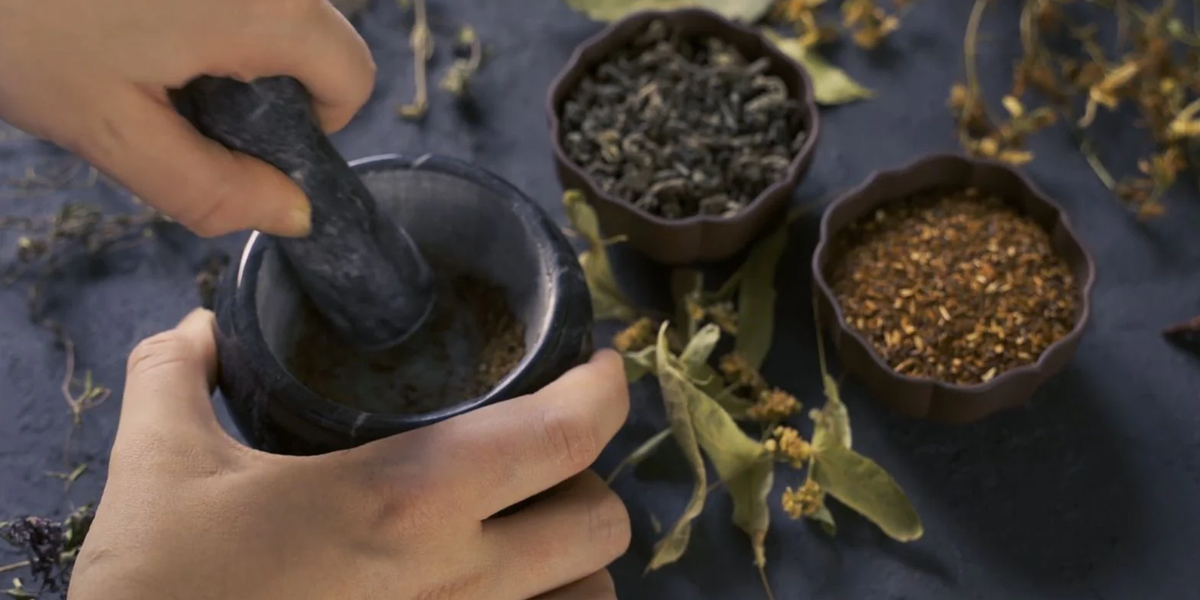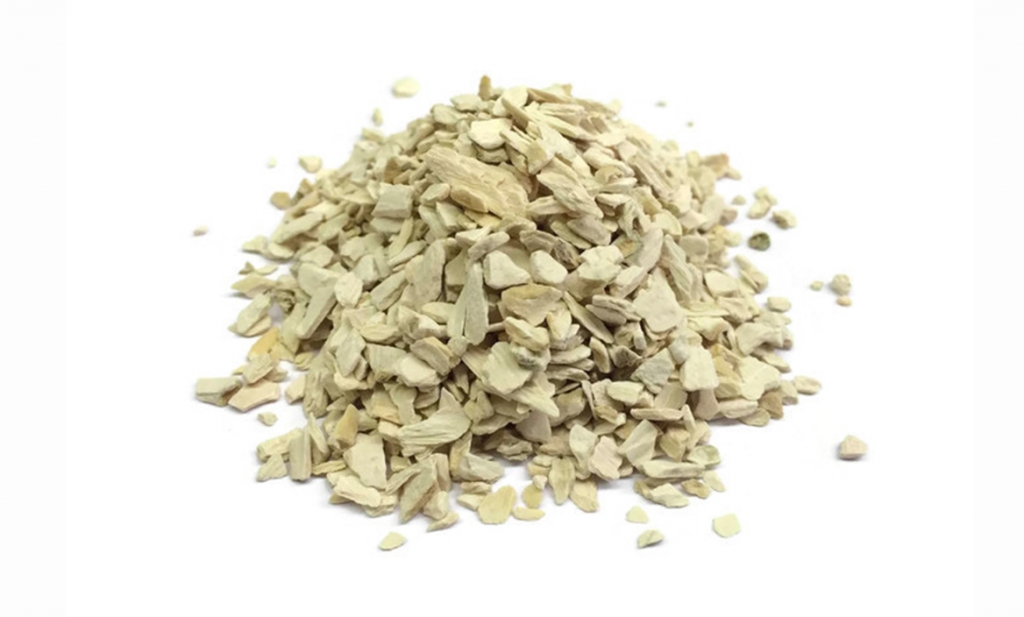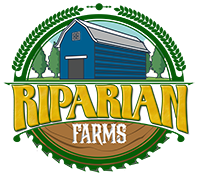Learning Herbalism – Where Do You Start

The Back Story
You may have experienced the same as I did. A few years back, I realized that we (as a society as a whole) had come to be too dependent upon what was being pumped out of the Big Pharma companies who, despite saying otherwise, was not in the business of healing rather they are in the business of maintaining. What they were mainly researching and developing were synthetic poisons to the human system that are designed to muffle the symptoms of a condition and not necessarily to the outright cure of it.
Case in point, why don’t we have something that near instantaneous cure of the common cold already? The reason is people getting colds is good business, the cold medicines, decongestants, and the like are a near trillion dollar business. They all have no interest in getting a cure, especially those sicknesses that people can get on a regular basis.
With this stark epiphany, I began to look at what was done for most ailments before the current medical systems were in place. Granted, many of what we face today either because of detection of conditions have become better, or that these increasingly diagnosed conditions are products of the environment that we have surrounded ourselves with in our modern day conveniences, they in the distant past may not have had a large need for having large pharmaceutical supplies at hand. I began to learn how my grandparents and those who were before them handled, say the common cold.
Remedies that were passed down from parent to child (usually mother to daughter) were common knowledge and frequently prepared and utilized by said family. In many respects, this family knowledge has been drummed out because of what Big Pharma has done. but conversely, many have been written down, used and practiced even up to this day. We certainly thank those who preserved this knowledge so that we can still benefit from it presently.
The Search Began
So I set myself to learning what was still out there in regards to what was used Before Big Pharma. And it was enlightening, and completely daunting at the same time!
I dived in head first, I went into those businesses that said they were holistic, naturopathic, and herbal. I talked with those who just paid lip service as a promotional gimmick and to those whose knowledge base was so vast I wished I could have downloaded it into my own brain. I was put onto several books to learn which plants, roots, or fungi could be beneficial or detrimental. I was told that what I had embarked upon was a life-long pursuit. And they were not wrong!
Out of the many, many books on Herbalism I picked up, I got the likes of Encyclopediia of Herbs and Plants, or the one that I reference the most currently is ‘Prescription for Natural Healing” by Phyllis A Balch and Stacy Bell. And what I found out is that you definitely will experience info overload. That there are more than one plant that could get you the desired effect and result that you are looking to get, and that it is only through the experience of using that you can gain the know-how you may seek.
If I were to start again in this learning process I would go about it this way:
Roadmap to Your Family Apothecary –
- Look into your own medical history, or what your family has historically been plagued with. First the larger conditions – What conditions show up the most in the past? Diabetes, cancers, thyroid problems, gout… whatever it may be find out and keep a list of them.
- Then move to the smaller stuff, what do you or your family struggle with the most? Cold sores, ear aches, tonsil issues, frequently nasal congestion? Those types of illnesses that pester your daily or weekly existence. These types of things do run in family groups as well. I have family members that nearly all have gall bladder problems and have had to take steps to rectify them. Once you identify those, by writing them down. Put them on your list.
- Next and more importantly look for singular plants or plant species that have been shown to deal with the conditions that plague you. Best way to get to know the vast lexicon of herbs is to get familiar with those that could provide you with relief from the family list of illnesses. Get to know these types of plants and herbs, how they look, where they grow, how they can be used.
- For instance, there are some plants that can be used more effectively when they are picked in the spring, than in the fall, and vice-versa. Additionally there are some that you can use all of what is in the plant, or that it is better to use the flower, or the leaf, or the stock, or even the root. There are some beneficial plant herbs that have both. That they can have one type of an effect if the leaves are harvested in the spring and another when the roots are utilized in the fall. Getting to know those plants that produce the herb that can most benefit you gets you into the knowledge base you seek.
- The Most Important Part of This All. You got to try it! Book learning is all fine and dandy and yes is important when you start out, but there is no substitute for getting in and experiencing it for yourself. Look At Blends!
- Blends are recipes used of a mixture of herbs that may have a greater effect than the some of its individual parts. Mullein may be really good in helping with whooping cough, but if you combine it with Lemongrass and Stinging Nettle with a bit of Hibiscus you get better and quicker action on the healing process. Get into the preparation and making of that which will benefit you most. the Ingredients, the carriers (Oils, Creams, Solutions – Glycerine, Alcohol or Water) containers, the decoction process and storage after it is ready all play a part in this.
- Then match up the list from the smallest to greatest with the blends that you find that battle those ailments, illnesses and conditions. Prep the Blends and have them on hand when a condition flares up or a sickness rolls around. Then you can build from there!
So as I said before above, this is knowledge that used to be taught on a regular basis, that is not so readily now. For us that weren’t exposed to this type of learning before we can get paralyzed with the sheer weight of it all. If you take it little by little and move methodically towards the tried and true, you will have the knowledge and the know how that will last a lifetime and that you can pass on those who come after you.
And when Big Pharma goes the way of the dodo… you won’t be left in the lurch with the more common health problems we all face.
To get you started, below you will find an Herbal Blend Recipe for Fire Cider – which is used to beat and clear off that common cold I spoke about earlier… enjoy!
Herbal Vinegars – Fire Cider
 This yields a spicy, sweet and tangy tonic that truly lives up to its name. I make a batch every fall to support immune function, stimulate digestion and warm up on cold winter days. Some people also use it in the spring, when seasonal allergies tend to pop up, to help sinuses stay clear. It’s a spicy, delicious tonic that’s made by infusing apple cider vinegar with powerful immune-supporting, lymph moving, circulation stimulating, antioxidant-rich and digestion enhancing fresh herbs.
This yields a spicy, sweet and tangy tonic that truly lives up to its name. I make a batch every fall to support immune function, stimulate digestion and warm up on cold winter days. Some people also use it in the spring, when seasonal allergies tend to pop up, to help sinuses stay clear. It’s a spicy, delicious tonic that’s made by infusing apple cider vinegar with powerful immune-supporting, lymph moving, circulation stimulating, antioxidant-rich and digestion enhancing fresh herbs.
Equipment Needed
-
Quart-sized jar with a lid
-
Parchment paper or wax paper (If using a metal lid, not needed if using a plastic lid)
Ingredients to Put Together
- ½ cup fresh ginger root (peeled and diced or shredded)
- ½ cup fresh horseradish root (peeled and diced or shredded)
- ½ cup fresh turmeric root (peeled and diced or shredded – if not available substitute ¼ cup additional ginger and ¼ cup additional horseradish)
- ½ cup white onion (chopped)
- ¼ cup garlic cloves (minced)
- 2 jalapeno peppers (chopped – or if you really like heat try habanero instead)
- 2 organic lemons (zest and juice)
- raw apple cider vinegar (ACV)
- several sprigs fresh rosemary or thyme (optional)
- ½ tsp whole black peppercorns (optional)
Mixing Instructions
Here’s the basic process:
- Put chopped ingredients in a clean quart jar and cover them with a fermentation weight.
- Pour vinegar over them until they’re well covered.
- Cover jar with a lid and store in a cool, dark place for 2-4 weeks.
- Strain out the herbs and mix the infused vinegar with raw honey. Drink up!
Because it takes about a month to mature, I recommend starting your batch now so you’ll be ready for fall. I actually have two going – one for the family and one for myself, because I love all things horse-radishy, and I’m not always great at sharing.
Instructions
- Remember when using dried herbs the herbs to liquid ratio is 1:5 in the chosen jar and with fresh ingredients it is a 1:2 ratio
-
Add your chosen liquid – 80-100 proof brandy or vodka OR Raw unfiltered Apple Cider Vinegar
-
Place parchment paper between lid and jar
- Seal jar tightly
-
Label Jar with Name of tincture, and date of creation
- Shake jar often once a day for 3 weeks, and then 3 times a week for the remaining 3-5 weeks
-
After the 6-8 weeks, filter the herbs from the liquid, squeeze out the resulting liquid using cheesecloth or a nut milk bag
After Your Vinegar Has Infused, Add:
- raw honey (optional – add to taste)
Put the liquid after the infusion of the ingredients and raw honey into a glass bottle with a tight fitting cork, or lid. Keep it refrigerated. Shelf Life: Herbal vinegars have a relatively long shelf life, usually lasting at least six months.
HOW & WHEN TO USE: Many people take 1-2 tablespoons throughout the fall/winter months to support immune function, or every three to four hours if cold and flu symptoms are present. Although my kids don’t generally gravitate toward spicy foods, they really love this stuff!
Here are some more ways to use it:
- As a “wellness shot” – I actually love the taste, so I put about 1 oz. in a shot glass to drink straight up. You can also add extra honey or cayenne pepper if you’d like!
- Added to herbal tea – If I’m feeling congested I put couple of tablespoons in lemon ginger tea and then breathe in the steam as I sip.
- Mixed with water – If you don’t feel like making herbal tea, just mix it to taste with hot water and honey.
- In juice – For little ones, mix a small amount into freshly-pressed orange juice or lemonade
- As a marinade – It’s delicious with beef or chicken.
- As salad dressing – Mix with olive oil and honey to make a yummy vinaigrette.
- Added to rice or cauliflower fried rice

